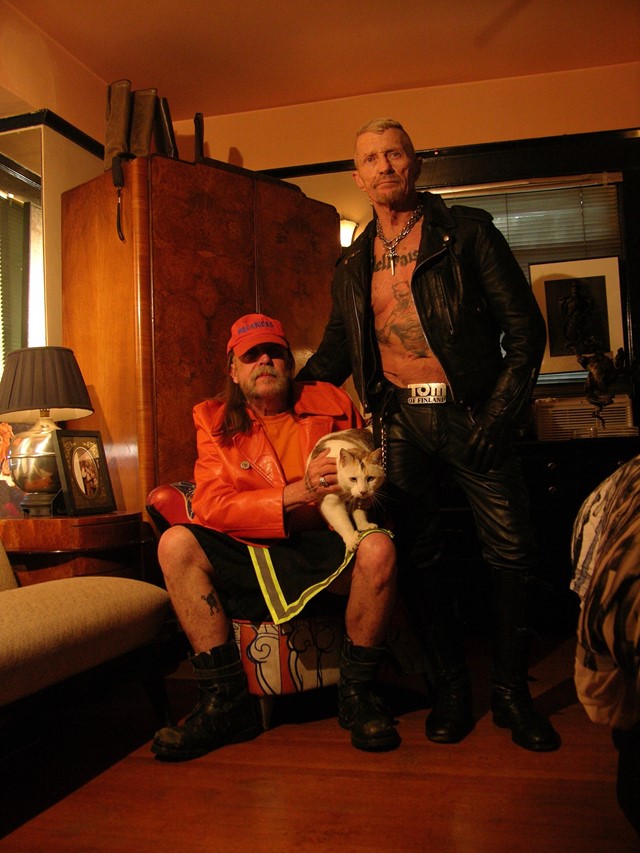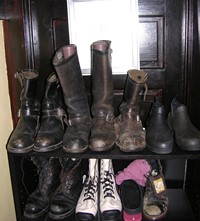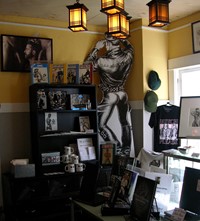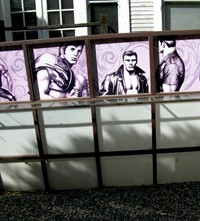Meet the Men Behind LA’s Home of Homoerotica, Tom of Finland House
- TextRick Castro
On what would have been the legendary homoerotic artist’s 99th birthday, fetish photographer Rick Castro talks to “the dudes” behind the Tom of Finland Foundation about his life and legacy
Tom of Finland is arguably the most influential creator of homoerotic images. Tom’s artworks are in the permanent collections of MoMA New York, MoCA & LACMA, UC Berkeley Art Museum, the Art Institute of Chicago, San Francisco Museum of Art, to name a few, in addition to numerous gallery exhibitions worldwide.
In 2014, the Finnish postal service published a set of first class stamps featuring drawings by Tom; depicting a firm butt with a Tom’s man face between the thighs. The stamp had pre-orders from 178 countries, making it the bestselling stamp in Finnish postal service history. A feature length film entitled Tom of Finland, directed by Dome Karukoski, came out in 2017.
Tom is the most well-known artist from Finland and highly respected internationally, but Tom House could only exist in Los Angeles – he lived in the attic for the last part of his life. Tom House is a one-of-a-kind shrine to Tom: an erotic museum, salon, gallery, archive, artist residency, library and party house. A must-see for anyone traveling to LA.
Tom of Finland Foundation has supported my art since my humble beginning as a photographer in 1986 and I had the pleasure of meeting Tom of Finland multiple times. Durk Dehner and S.R. Sharp are partners in life and run the Tom of Finland Foundation. Together they’ve created an erotic oasis, that makes everything else in the world seem mundane.
I sat down with the dudes in the drawing room of Tom House...
Rick Castro: Hey Durk and Sharp… Do you guys remember how and where we met?
S.R. Sharp: I have a feeling it was in that eclectic space, Palace Costumes.
S.R. Sharp and I were wardrobe stylists/designers in our former lives.
Durk Dehner: I don’t.
Rick Castro: [Laughs] Wanna take a guess?
Durk Dehner: At One Way? On a regular night… when it was a bar or a sex club?
Rick Castro: Yes…
Durk Dehner: Which one?
Rick Castro: When it was a bar.
I met Durk Dehner at One Way, the best leather bar in Los Angeles – hands down – sometime in 1984-ish. I was unsuccessful at picking him up, but we did make out! A couple years later I invited him to my first exhibition at the original Different Light Bookshop in Silverlake. Durk became my first collector and publisher of my first book CASTRO (1991) thus putting me on the erotic map.
Rick Castro: Sharp, tell me about meeting Durk Dehner?
S.R. Sharp: My best friend died and I had written his will. It was suggested I contact this dude with a big house in Echo Park who would be interested in the undesignated ‘relics’ from my friend’s life. I called and the dude, Durk, he told me to bring the stuff over, but not use the front door, rather enter through the dungeon…
Rick Castro: How long have you been together?
S.R. Sharp: Since I stomped down those basement stairs several decades ago.
Rick Castro: Do you still have sex?
S.R. Sharp: With Durk?
Rick Castro: What’s your first memory of seeing the artwork from Tom of Finland?
S.R. Sharp: Honestly back in the day, I don’t think I associated the work with one artist. It was more of a universal ‘welcome’ sign in so many queer establishments.
Durk Dehner: The first for me was summertime, 1976, when I was 26 at the Spike bar, New York. I saw a poorly reproduced poster for a motorcycle run. They used an image of Tom’s called The Jailer. The energy that was coming off this drawing I gravitated to… Leather guy with cap on… No shirt. I decided to take the poster.
Rick Castro: You stole it?
Durk Dehner: Well I took it… I had just won the Mr Eagle’s Nest contest. One of the prizes was a shoot with Target Studios. At the shoot I met the artist Dom Orejudos AKA Entienne. I told him about the emotional impact the Tom of Finland drawing had on me. Entienne knew Tom and gave me his address. I wrote Tom a letter – handwritten – and he responded. He wrote that he saw me in an After Dark magazine spread shot by Bruce Weber. We became pen pals for a couple months. Through letters I interviewed Tom for The Advocate magazine.
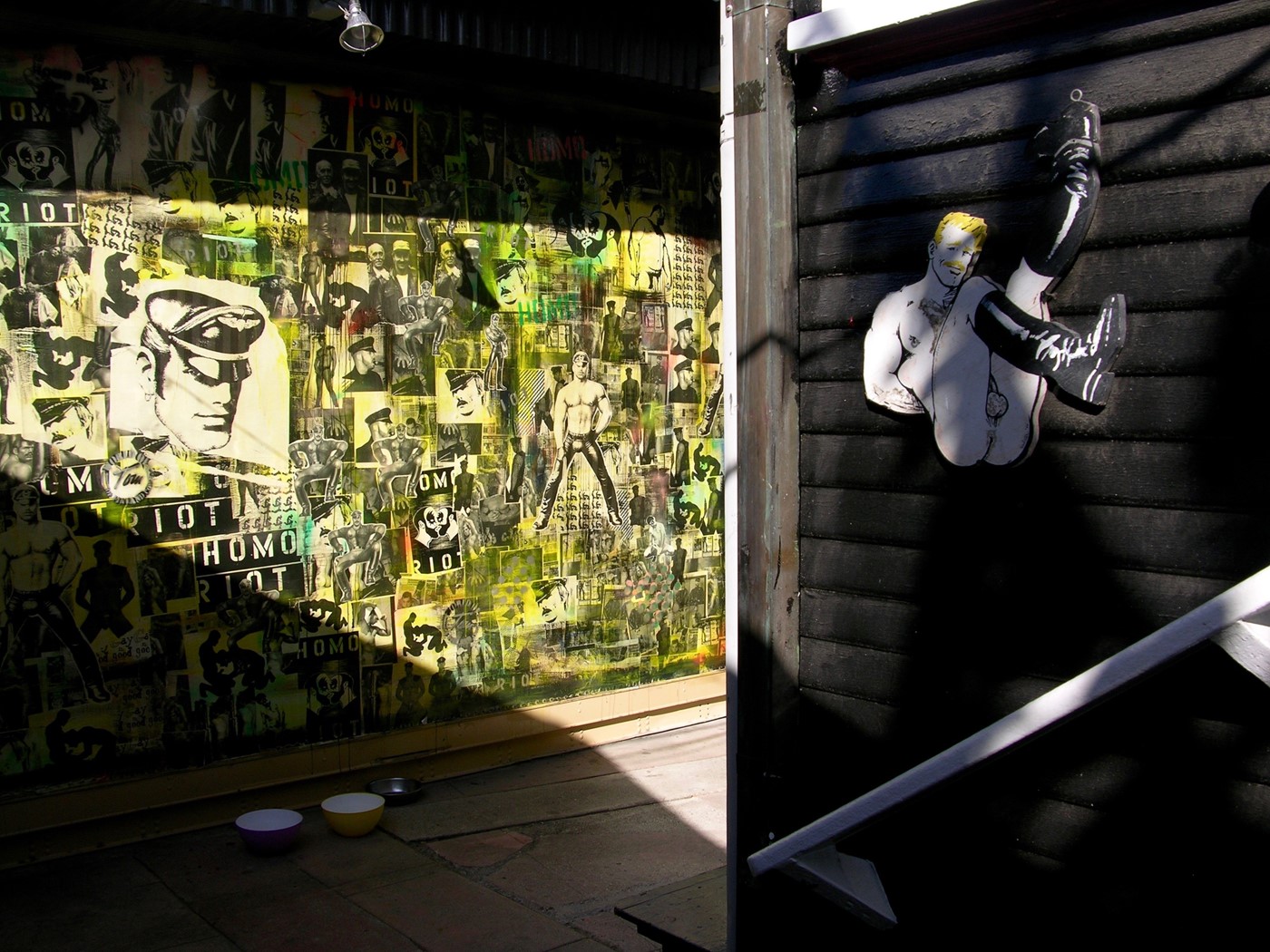
Rick Castro: When did you meet Tom?
Durk Dehner: I moved back to LA during the fall of 1976, then in 1977, Tom came to LA.
Rick Castro: What did Tom say when he first met you?
Durk Dehner: ‘I’m so glad you are who I thought you were.’ I offered to host him while he was in LA. I took him to get custom chaps from The Leatherman. He had his first LA exhibition at Eons Gallery on Heliotrope Ave, and then Fey Way Studios in San Francisco, where we met Robert Opel. From there we became many things. I was his friend, confidant, business partner, manager, lover, pimp… I was his…
Rick Castro: You were his person.
Durk Dehner: I was the instigator.
Rick Castro: How old was Tom when you met?
Durk Dehner: 58, and I was like 29… So from age 58 until 71 he was part of my life. Tom said to me, ‘thank you so much for keeping me young.’ We dropped quaaludes together, he smoked his first joint at the age of 60, we trusted each other. You know, Tom of Finland could have anyone he wanted, not because of his name, but who he was as a person. His personality was so charming and seductive.
Rick Castro: Whose idea was it to create the Tom of Finland Foundation?
Durk Dehner: Tom desired to have an archive, to leave a legacy behind. He wanted a record of being here. So we filed for non-profit status and created a purpose of mission in 1984. Then we decided to open the door wide. We didn’t limit to just gay men, but everyone, any form of erotic art.
Rick Castro: Sharp, what are your responsibilities at the foundation?
S.R. Sharp: We all wear many hats here. We all share the function of exposing folks to the liberating aspect of art. Messaging, curating, making introductions.
Rick Castro: Do you know the history of the house?
S.R. Sharp: Built in 1911, the style is American Craftsman and influenced by Colonial Revival of the same period. The original owner was a lawyer who bought this lot in ‘Sunset Boulevard Heights’ – now considered Echo Park – for ten dollars. It was to be used for ‘residential purposes with the condition that it not be leased or resold to Negro, African or Asiatic races’.
Durk Dehner: In 1974 the house was sold to the previous owner for $13,000. Then in 1979 myself and three partners paid $130,000, but the interest rate was 13.1/2%. To give you an idea the interest rates now are around 4%.
Rick Castro: Tell me about the early years at Tom House.
Durk Dehner: The house became a gathering place. We formed a group called the Dehner Brotherhood. A leather brotherhood where we changed our last names to Dehner.
Rick Castro: Was this named after the boots?
Durk Dehner: Yes it was.
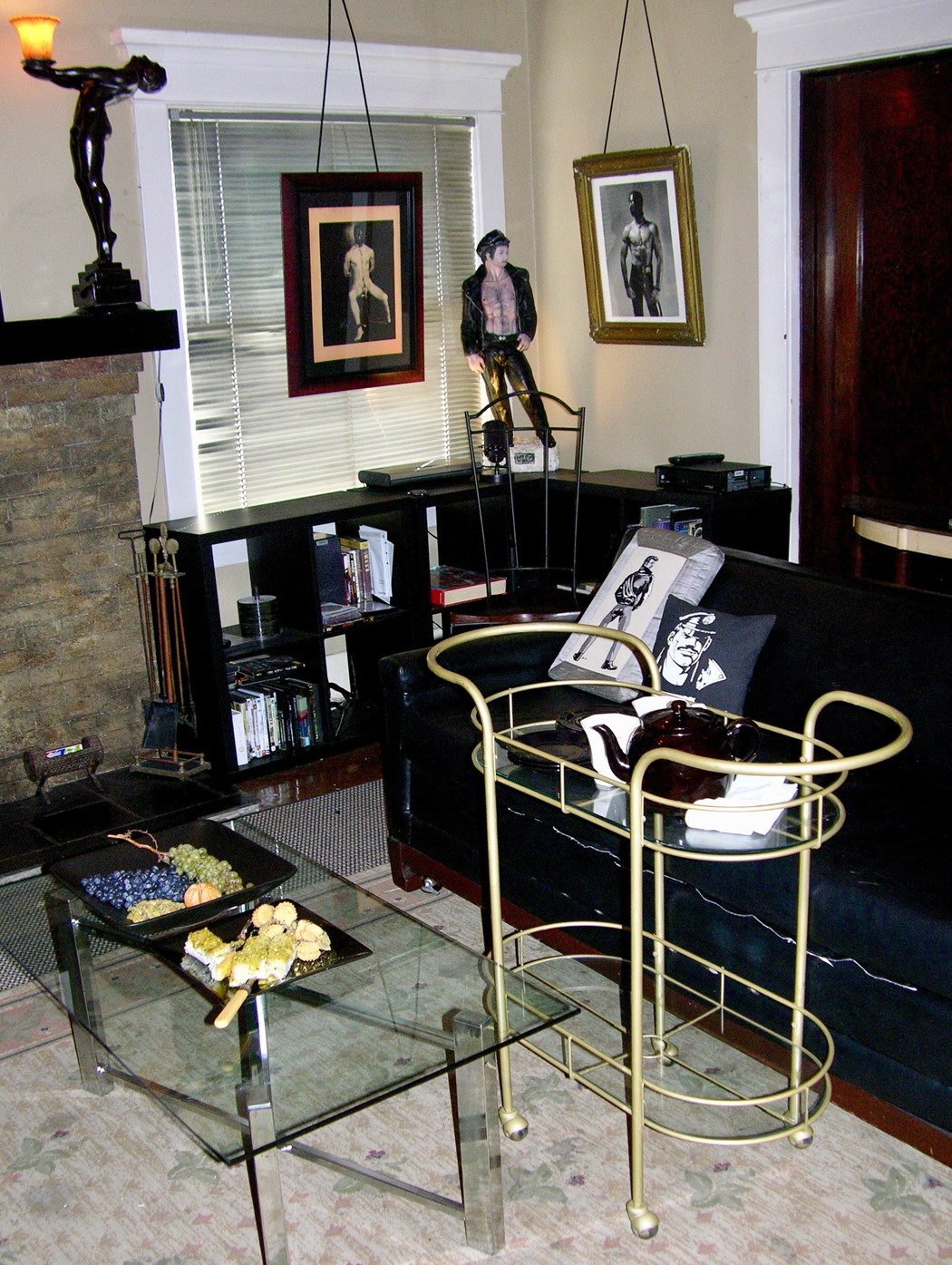
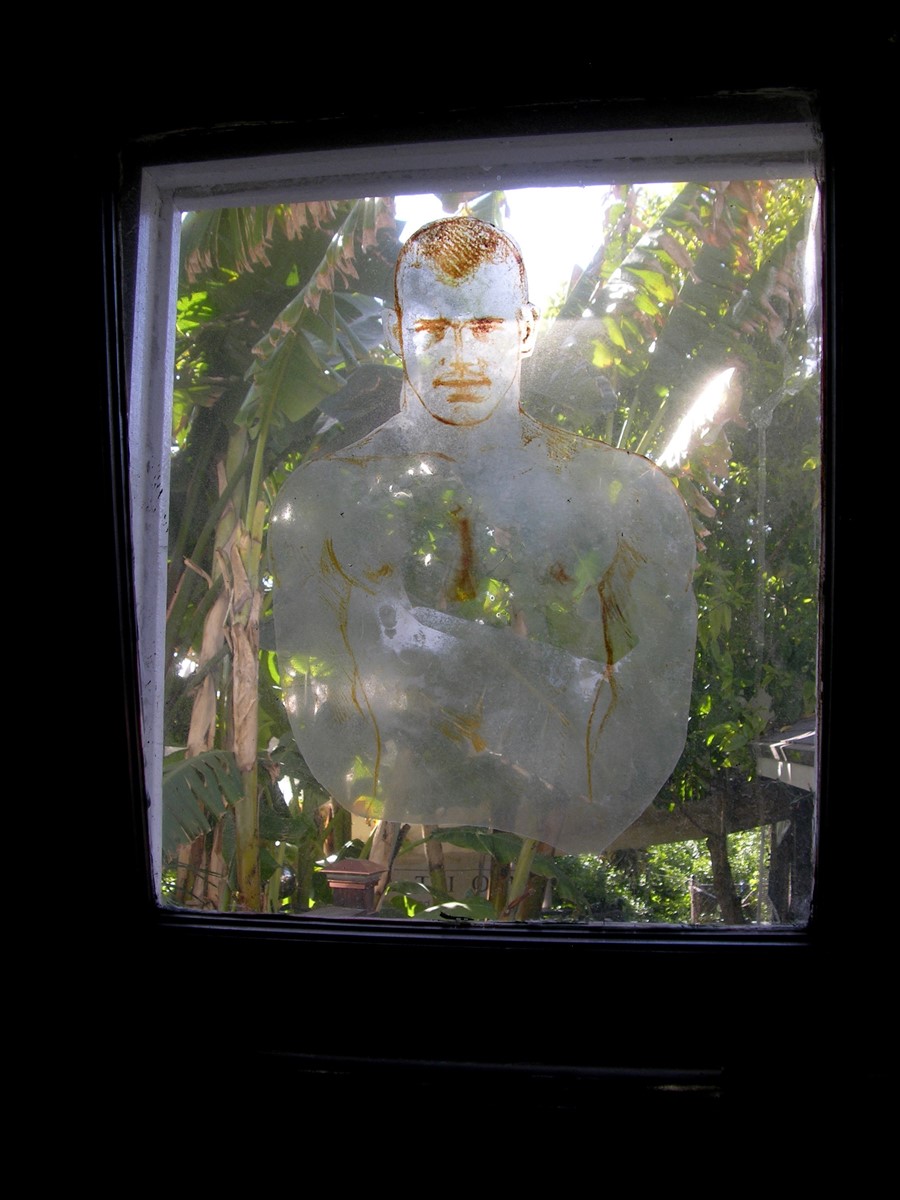
Rick Castro: How many Dehner brothers were there?
Durk Dehner: Seven Dehners and Tom.. So I changed my named to Durk Dehner. Durk was the name I masturbated to for years.
Rick Castro: You masturbated to the name Durk?
Durk Dehner: Well, because when I was a kid I found these sunglasses on the dashboard of a 1954 convertible and on the rim the monogram was DURK. From that point on that was my jerk off item.
Rick Castro: [Laughs] That is very fetish! Tell me about the process of acquiring historical status for Tom house.
S.R. Sharp: It has been a long process, at least a dozen years. The application to the city becomes public record and we wanted it to be written in just the right voice – not too preachy, not drained of humanity by being too scholastic. We found that perfect voice in the author Tom Cho who has actually lived in the house and was assisted by the great archivists that are drawn to this place. Los Angeles has made itself look really good by designating Tom of Finland House as Cultural-Historic Monument #1135, which recognises the historic person who lived here.
Rick Castro: When did you decide to include other artists at Tom of Finland Foundation?
Durk Dehner: It began in 1985 with The Hun AKA Bill Schemling. He was already organising salons at his house over on Crenshaw & Adams, on Sundays. Then Olaf [Odegaard]… Al Urban.
Rick Castro: What made you create the artist in residency program?
S.R. Sharp: In 2005, I invited Michael Kirwan out for his first one person show and ToFF’s Art Fair Weekend in Los Angeles. He was living in Florida and that year is remembered for its catastrophic hurricane season. While he was in LA, his Miami apartment was pretty much trashed. So a residency at TOM House made total sense and our program started organically.
Rick Castro: Tom House is very active on a regular basis. Do you enjoy controlled chaos?
S.R. Sharp: It ain’t chaos. It’s debauchery designed.
Durk Dehner: I must say I enjoy it when it’s quite… Rick it won’t happen unless I give up something and that may be privacy. It won’t live otherwise.
Rick Castro: What are some of the events that happen at Tom House?
Durk Dehner: Summer Film Nights where we screen 8mm films from our archives. Our monthly Life Drawing Session hosted by Miguel Reyes, have been going on for 30 years, the Erotic Art Festival every fall, and the Emerging Artist Competition. We house so many works of art, they must be shown to a wide audience. That’s what I’m working on now.
Rick Castro: What are your goals for Tom of Finland Foundation and Tom House?
Durk Dehner: Short term, to be useful and valuable to the community at large, so they benefit by our presence. Long term for Tom of Finland to sustain itself. To be funded and expand to an international level, multiple Tom of Finland artists residences around the world.
S.R. Sharp: With our Tom of Finland-branded merchandise – vodka, wine, coffee, clothing, dildos – a goal would be to allow everyone to have some ‘Tom’ in their lives. He makes everybody feel good and they have a way of saying thank you to the artist, and the foundation he created. It can introduce new audiences to the importance of artwork that portrays sexual behaviour and/or generates a sexual response.
Rick Castro: What are your plans for Tom’s 99th birthday?
S.R. Sharp: I’m working for 2020 – Tom’s 100th birthday – but what we’re doing for the 99th is to encourage, around the world, to create a party and celebrate what Tom of Finland gave us. When Tom was getting ready to depart I asked him what he wanted and he said, “I want a great party”. So the first Tom’s Bar was the year after his passing, 1992, at L.A.C.E.
Rick Castro: I do remember that! I had my first artist booth! What is the future of Tom House?
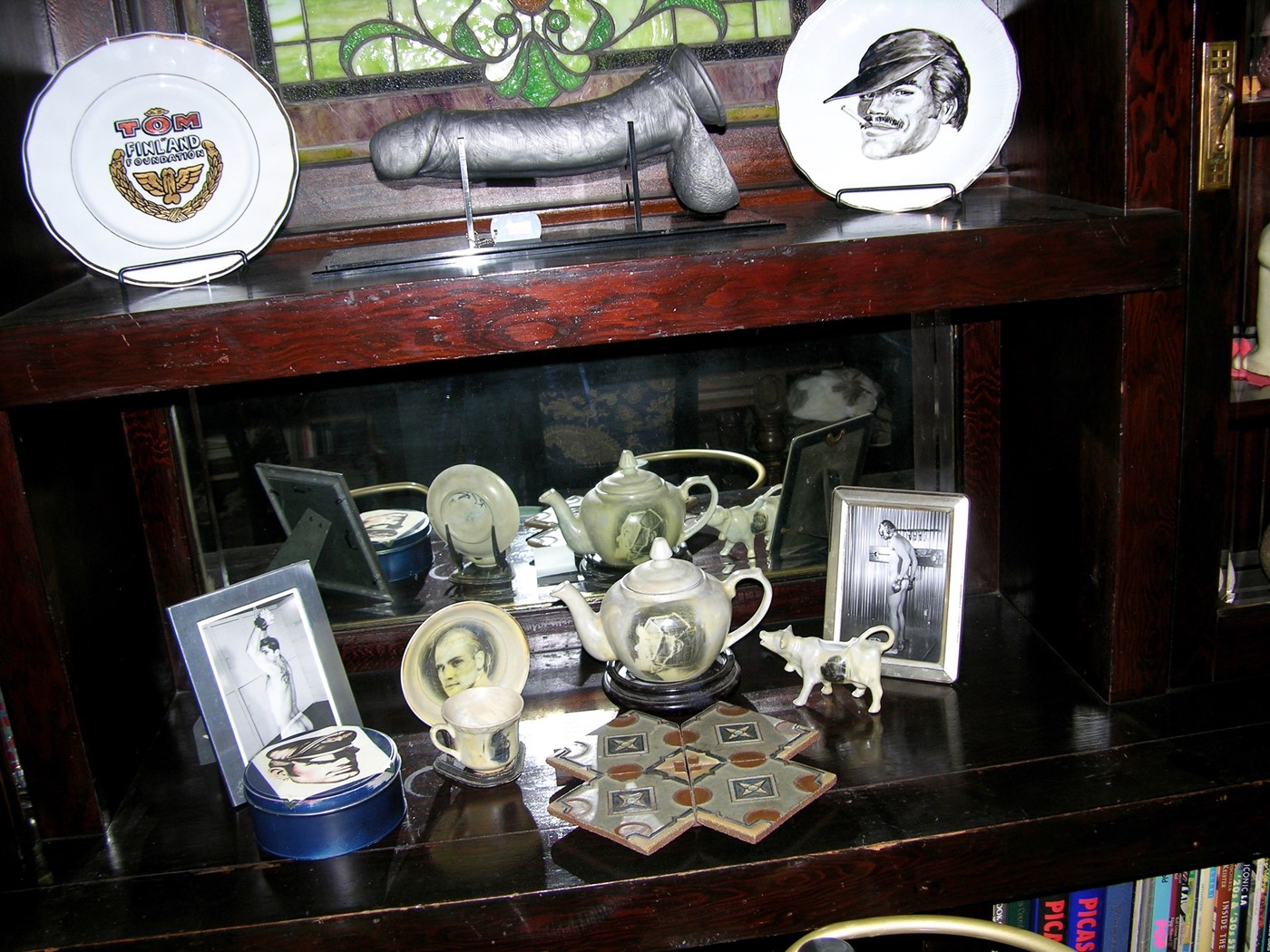
S.R. Sharp: It will remain a queer oasis. However, as anyone of a certain age, they require special, loving attention to endure and flourish.
Rick Castro: What is the future of homoerotic art?
S.R. Sharp: Social media is obliterating creativity and perverting us with homogeneity, and insidiously aggressive censorship. We should be building spaces for innovation and reinstating the architecture of the web.
Rick Castro: When I began my portrait series for Another Man, I listed a group of people as the soul of creative Los Angeles; the groundbreakers and one-of-a-kind spirits that make this city unique. Although not originally from LA, you’re definitely part of my list. What is your opinion of Los Angeles?
Durk Dehner: I’ve lived here since 1970. It pleases me to say Los Angeles continues to be a center of creativity. You can come here and do it at whatever level you’re at and make it happen. There are few roadblocks. All the young creative is happening here. I was speaking with Rich Villani at Los Angeles Magazine and we talked about LA being the new capital of America. It’s very international, with over 116 languages spoken. It’s not always been this way; when I came here in 1970 it was sleepy, not a lot happening.
Rick Castro: It was disjointed. You could do what you wanted, but nobody paid attention. Where will you guys spend your golden years? Will it be together?
S.R. Sharp: Yes, like endless seasons, and countless episodes, in paradise, But who will be our Mrs George Devereaux?
Durk Dehner: We’re in them. I’ll spend them here in Los Angeles, Berlin and Finland. The lesson I would like to share is we get to formulate our lives ourselves. If you don’t connect with what you are, you get to make what you identify with. This has become common now with non-binary identification. What I’ve done at Tom House is harmonious. We’ve created harmony.
